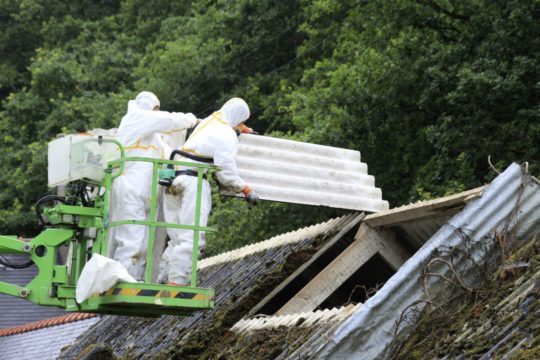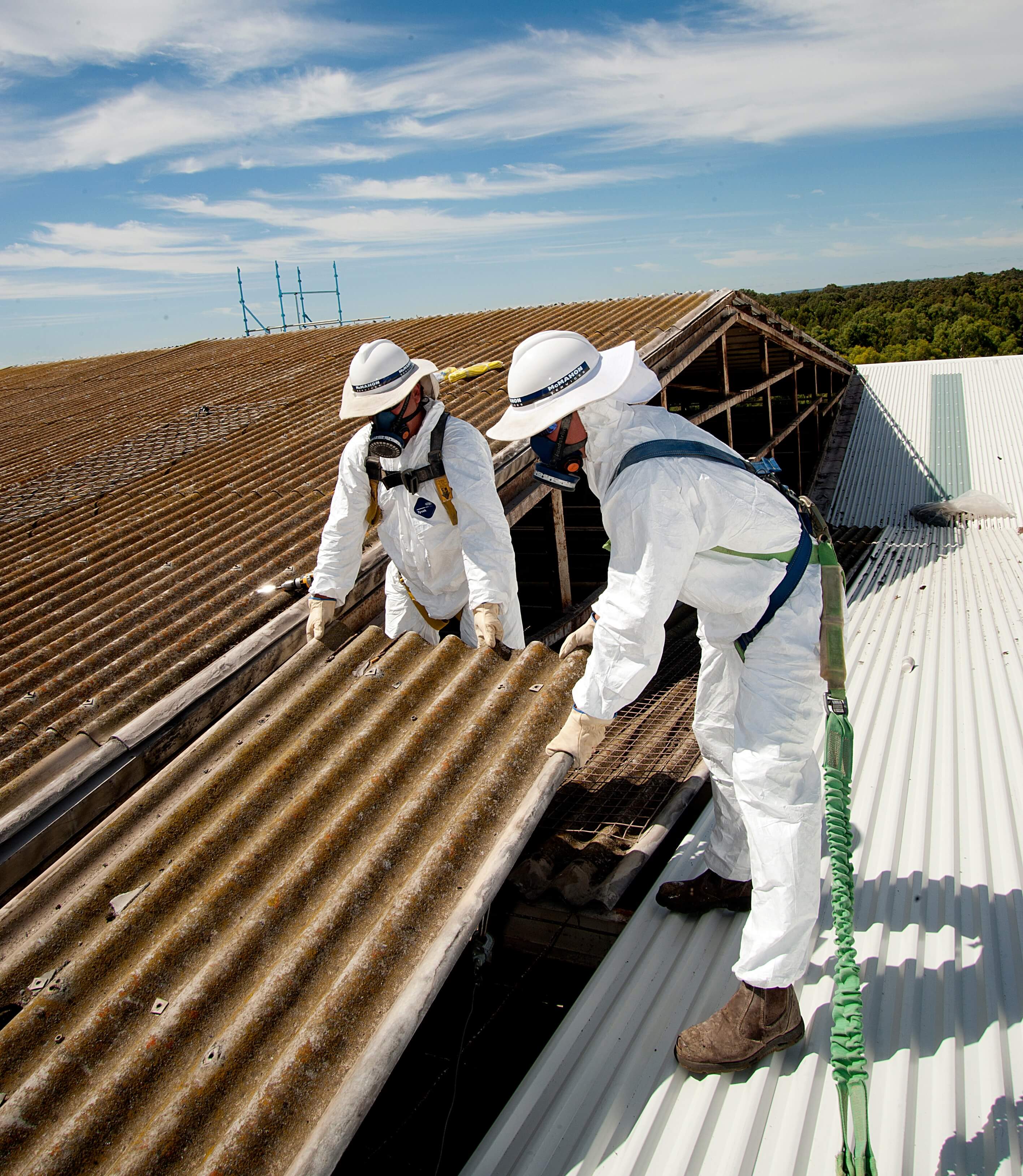Asbestos Roof Encapsulation Alternatives Risks Associated With Asbestos Roofs

Asbestos is a naturally occurring mineral that has been broadly utilized in building materials due to its fire-resistant properties and durability. However, the health risks associated with asbestos exposure have turn out to be increasingly clear over time, resulting in stringent regulations and guidelines for its removal, generally known as asbestos abatement guidelines. These guidelines goal to reduce the risk of exposure to asbestos fibers during removal and demolition activities.
Understanding the importance of proper asbestos abatement procedures is crucial for each staff and most people. When asbestos-containing materials are disturbed, microscopic fibers can turn out to be airborne, resulting in inhalation and potential serious health issues similar to lung cancer and mesothelioma. This heightened awareness has prompted the development of comprehensive guidelines that must be adhered to by professionals involved in asbestos abatement.
Prior to commencing any abatement project, it is important to conduct a thorough assessment of the location. This involves identifying the presence of asbestos-containing materials, assessing their condition, and evaluating the potential risks. A certified inspector, normally educated and authorized, typically performs this assessment. This preliminary step ensures that every one needed precautions could be taken through the removal process.
Once the assessment is complete, the next section entails growing an in depth abatement plan. This plan ought to define the methods for use, safety measures to be carried out, and waste disposal procedures. It must include the precise work practices that will be followed to make sure the protection of each staff and occupants nearby. Communication with all stakeholders is paramount at this stage to make sure everybody understands the procedures and safety measures in place.
Successful Asbestos Roof Removal Stories Risks Associated With Asbestos Roofs
Personal protective equipment (PPE) is a crucial part of asbestos abatement guidelines. Workers involved in the removal process should put on applicable gear, including respirators, disposable coveralls, gloves, and goggles. This PPE serves as a barrier between the employee and probably hazardous materials, decreasing the risk of inhalation or pores and skin contact with asbestos fibers.
Containment is another essential factor of safe asbestos abatement. The work area should be clearly delineated to stop unauthorized access. This usually includes using plastic sheeting to seal off the realm and stop asbestos fibers from escaping. Negative air pressure models may also be utilized to ensure that any airborne fibers are contained within the designated work web site.
Wet methods are beneficial for asbestos removal when feasible. By dampening materials, the discharge of asbestos fibers into the air is significantly decreased. This practice points to the importance of guaranteeing that the environment remains moist in the course of the removal process. In addition, removing asbestos as complete sections or items, as a substitute of breaking them apart, additional minimizes the danger of releasing fibers.
After the removal process is complete, thorough cleansing of the work space is essential. This includes using specialised vacuums equipped with HEPA filters to make sure that any residual asbestos fibers are effectively captured. Additionally, all surfaces should be completely wiped down, and air tests are often performed to confirm that no asbestos fibers stay in the environment.
Asbestos Removal Equipment Used In Sydney Risks Associated With Asbestos Roofs
Proper disposal procedures for asbestos waste are outlined in the guidelines to stop exposure to asbestos in landfills or different disposal sites. Asbestos-containing materials have to be double-bagged in leak-tight containers and transported in accordance with native regulations. Only designated disposal websites that are geared up to deal with hazardous waste should receive asbestos materials.

Training and certification are also fundamental elements of the rules. All personnel concerned in asbestos abatement should endure a rigorous training program focused on safe work practices, hazard recognition, and emergency response strategies. This training ensures that staff are competent in managing the inherent risks related to asbestos and might intervene successfully in case of an emergency.
Compliance with native, state, and federal regulations is not only a best practice but a legal requirement. Agencies such as the Environmental Protection Agency (EPA) and the Occupational Safety and Health Administration (OSHA) have established regulations governing asbestos abatement. These regulations provide a framework for ensuring that asbestos is managed safely and responsibly, protecting both workers and the public.
In conclusion, adhering to asbestos abatement guidelines is critical for ensuring the safety of everyone involved in or affected by an abatement project. From the initial assessment and planning stages to the precise removal and correct disposal of asbestos-containing materials, every step should be approached meticulously - Asbestos Awareness Campaigns In Sydney. Education and training are essential to cultivating a educated workforce able to implementing these guidelines successfully. As awareness of asbestos-related health risks continues to develop, compliance with these guidelines will contribute considerably to public health and safety. By following established protocols, we will mitigate risks related to asbestos exposure, safeguarding not simply employees, however the community as a complete
Asbestos Roof Removal Community Resources In Sydney Residential Asbestos Removal Services
- Ensure correct identification and assessment of asbestos-containing materials (ACM) previous to beginning any abatement work to find out the extent and kind of materials current.
- Utilize educated and authorized professionals for the removal process to attenuate health risks and ensure compliance with regulatory standards.
- Establish a containment space across the worksite utilizing plastic sheeting and limitations to stop the spread of asbestos fibers during abatement activities.
- Implement negative air pressure techniques to filter airborne particles and preserve air quality inside the containment area throughout the removal process.
- Conduct thorough inspections and air monitoring earlier than, throughout, and after abatement to verify that asbestos levels are within safe limits.
- Use acceptable private protective equipment (PPE) for staff, including respirators, disposable coveralls, and gloves, to guard towards exposure.
- Follow proper waste disposal protocols for ACM, ensuring it's securely sealed and transported to designated hazardous waste amenities.
- Maintain detailed data of the abatement process, including inspection stories, monitoring outcomes, and disposal certifications, for regulatory compliance.
- Provide clear communication with occupants and relevant stakeholders in regards to the abatement process, potential risks, and safety measures being applied.
- Stay updated with native, state, and federal regulations relating to asbestos management and abatement to ensure compliance and safety all through the project.undefinedWhat are the primary asbestos abatement guidelines I should be aware of?
The main guidelines embody following federal and state regulations, conducting an assessment to identify asbestos presence, having a educated and certified contractor carry out the abatement, and making certain proper cleanup and disposal of asbestos waste according to native environmental laws.

How can I inform if my home contains asbestos?
Asbestos may be found in materials corresponding to insulation, floor tiles, and roofing. If your home was built earlier than the 1980s, it’s advisable to have knowledgeable inspection, as testing entails taking samples from suspected materials and sending them to a lab for analysis.
Asbestos Management Plans For Roofs Removal And Disposal Of Asbestos
What steps ought to I take if I find asbestos in my home?
If asbestos is discovered, it's crucial to not disturb it. You ought to contact a licensed asbestos abatement contractor to assess the state of affairs. They will consider whether to include, take away, or monitor the asbestos, depending on its condition and site.
Are owners allowed to perform their own asbestos abatement?
Generally, it isn't really helpful for homeowners to handle asbestos abatement on their very own due to health risks and legal implications. Abatement must be carried out by certified professionals who're educated in safe dealing with and disposal methods to guard themselves and residents.
Educational Resources On Asbestos Safety Hazardous Materials & Disposal Services
What is the importance of air monitoring throughout asbestos abatement?
Air monitoring is essential to ensure that asbestos fibers usually are not released into the environment through the abatement process. It includes sampling air earlier than, throughout, and after the work to confirm that asbestos levels are under acceptable limits, thus protecting staff and occupants.
How do I select a certified asbestos abatement contractor?
Regulatory Updates For Asbestos Roof Removal What To Do If You Find Asbestos
Look for contractors who're licensed, certified, and have expertise in asbestos removal. Check their references, learn evaluations, and verify their credentials. It’s necessary that they follow local regulations and OSHA guidelines for wonderful safety practices.
What should I anticipate through the asbestos abatement process?
During the process, the work area shall be sealed off, and containment measures shall be carried out. The contractor will use specialized equipment to safely take away the asbestos material, adopted by thorough cleansing and disposal of all waste to ensure the world is safe for re-occupancy.
Cost Of Asbestos Roof Removal In Sydney Find A Licensed Asbestos Removalist
What are the risks of not following asbestos abatement guidelines? Asbestos Roof Removal Machinery And Tools.
Failing to adhere to guidelines can expose residents and workers to dangerous asbestos fibers, resulting in severe health points corresponding to mesothelioma and lung most cancers. Legal consequences can also arise, including fines and potential litigation from violations of safety regulations.
Understanding Asbestos Roof Hazards Cost Guide For Asbestos Removal
How often should I even have my property inspected for asbestos?
For older homes or properties that will endure renovations, common inspections every few years are advisable. Additionally, if any renovations or disturbances occur, an inspection should be conducted to make sure no hidden asbestos is current that would pose health risks.
he has a good point click for info
Comments on “Sydney Asbestos Roof Removal Contractors Commercial Roofing Contractor For Removal”